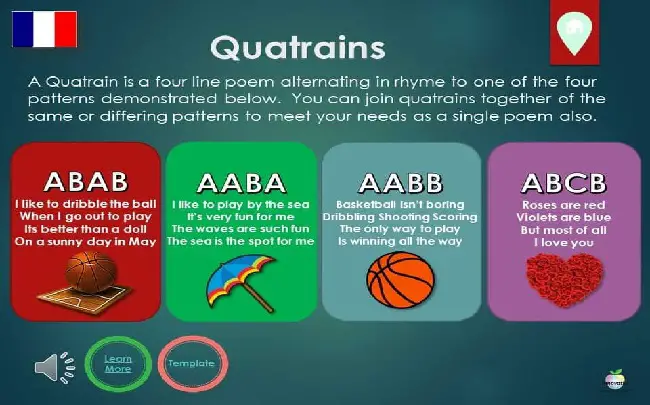In our bid to continue to contribute to educational development through the provision of various learning materials, here is another compilation of the common chemistry terms you must know as a science student.
We will provide an extract from the file and then a link to download the full file.
Absolute temperature: This is a temperature reading made relative to absolute zero. We use the unit of Kelvin for these readings.
Absolute zero: This is the lowest temperature possible. If you remember that temperature is a measurement of how much atoms move around in a solid, you can guess that they stop moving entirely at absolute zero. In reality, bonds still vibrate a little bit, but for the most part, you don’t see much happening.
Accuracy: When you measure something, the accuracy is how close your measured value is to the real value. For example, if you’re actually six feet tall and your brother measures your height as six feet, one inch, he’s pretty accurate. However, if your cousin measures your height as twelve feet, 13
inches, he’s not accurate at all.
Acid: This is anything that gives off H+ ions in water. Acids have a pH of less than 7 and are good at dissolving metals. They turn litmus paper red and phenolphthalein colourless.
Acid anhydride: This is an oxide that forms an acid when you stick it in water. An example is SO3 – when you add water it turns into sulfuric acid,
H2SO4.
Acid dissociation constant (Ka): This is equal to the ratio of the concentrations of an acid’s conjugate base and the acid present when a weak acid dissociates in water. That is, if you have a solution of Acid X where the concentration of the conjugate base is 0.5 M and the concentration of the acid is 10 M, the acid dissociation constant is 0.5/10 = 0.05.
Activated complex: In a chemical reaction, the reagents have to join together into a great big blob before they can fall back apart into the products. This great big blob is called the activated complex (a.k.a. transition state)
Activation energy: The minimum amount of energy needed for a chemical reaction to take place. For some reactions, this is very small (it only takes a spark to make gasoline burn). For others, it’s very high (when you burn magnesium, you need to hold it over a Bunsen burner for a minute or so).
Activity series: This is when you arrange elements in the order of how much they tend to react with water and acids.
Actual yield: When you do a chemical reaction, this is the amount of chemical that you actually make (i.e. The amount of stuff you can weigh).
Addition reaction: A reaction where atoms add to a carbon-carbon multiple bond.
Adsorption: When one substance collects on the surface of another one.
Alcohol: An organic molecule containing an -OH group
Aldehyde: An organic molecule containing a -COH group
Alkali metals: Group I in the periodic table.
Alkaline earth metals: Group II in the periodic table.
Alkane: An organic molecule that contains only single carbon-carbon bonds.
Alkene: An organic molecule containing at least one C=C bond
Alkyne: An organic molecule containing at least one C-C triple bond.
Allotropes: When you have different forms of an element in the same state. The relationship that white phosphorus and red phosphorus have with each other is that they’re allotropes.
Alloy: A mixture of two metals. Usually, you add very small amounts of different elements to make the metal stronger and harder.
Alpha particle: A radioactive particle equivalent to a helium nucleus (2 protons, 2 neutrons)
Amine: An organic molecule that consists of an ammonia molecule where one or more of the hydrogen atoms have been replaced by organic groups.
Amino acid: The basic building blocks of proteins. They’re called “amino acids” because they’re both amines (they contain nitrogen) and acids
(carboxylic acids, to be precise)
Amphiprotic: When something is both an acid and a base. Like amino acids, for example.
Amphoteric: When something is both an acid and a base. Sounds familiar, huh?
Anode: The electrode where oxidation occurs. In other words, this is where electrons are lost by a substance.
Aqueous: dissolved in water
Atomic mass unit (a.m.u.): This is the smallest unit of mass we use in chemistry, and is equivalent to 1/12 the mass of carbon-12. To all intents and purposes, protons and neutrons weigh 1 a.m.u.
Atomic radius: This is one-half the distance between two bonded nuclei. Why don’t we just measure the distance from the nucleus to the outside of the atom – after all, isn’t that the same thing as a radius? It is, but atoms are also (theoretically) infinitely large (due to quantum mechanics), making this impossible to measure.
Atomic solid: A solid where there’s a bunch of atoms in the lattice. This is different from an ionic solid, where ions are the things that are sticking
together.
Aufbau principle: When you add protons to the nucleus to build up the elements, electrons are added into orbitals.
Avogadro’s Law: If you’ve got two gases under the same conditions of temperature, pressure, and volume, they’ve got the same number of particles (atoms or molecules). This law only works for ideal gases, none of which actually exist.
Base anhydride: An oxide that forms a base when water is added. CaO is an example, turning into calcium hydroxide in water.
Base: A compound that gives off OH- ions in water. They are slippery and bitter and have a pH greater than 7.
Battery: This is when a bunch of voltaic cells are stuck together.
Beta particle: A radioactive particle equivalent to an electron.
Bidentate ligand: A ligand that can attach twice to a metal ion.
Binary compound: A compound only having two elements
Binding energy: The amount of energy that holds the neutrons and protons together in the nucleus of an atom. It’s a lot of energy, which is why you don’t see nuclei falling apart all over the place.
Bond energy: The amount of energy it takes to break one mole of bonds.
Bond length: The average distance between the nuclei of two bonded atoms.
Boyle’s Law: The volume of a gas at constant temperature varies inversely with pressure. In other words, if you put big pressure on something, it gets
small.
Bronsted-Lowry acid: Acids donate protons [H+ ions] and bases grab them
Buffer: A liquid that resists change in pH by the addition of acid or base. It consists of a weak acid and its conjugate base (acetic acid and sodium
acetate, for example).
Calorimetry: The study of heat flow. Usually, you’d do calorimetry to find the heat of combustion of a compound or the heat of the reaction of two compounds.
Carboxylic acid: An organic molecule with a -COOH group on it. Acetic acid is the most famous one.
Catalyst: A substance that speeds up a chemical reaction without being used up by the reaction. Enzymes are catalysts because they allow the reactions that take place in the body to occur fast enough that we can live.
Cathode: The electrode in which reduction occurs. Reduction is when a compound gains electrons.
Chain reaction: A reaction in which the products from one step provide the reagents for the next one. This is frequently referred to in nuclear fission
(when large nuclei break apart to form smaller ones) and in free-radical reactions.
Charles’s Law: The volume of a gas at constant pressure is directly proportional to the temperature. In other words, if you heat something up, it gets big.
Chemical equation: The recipe that describes what you need to do to make a reaction take place.
Chemical properties: Properties that can only be described by making a chemical change (by making or breaking bonds). For example, colour isn’t a chemical property because you don’t need to change something chemically to see what colour it is. Flammability, on the other hand, is a chemical property, because you can’t tell if something burns unless you actually try to burn it.
Chirality: When a molecule has a non-superimposable mirror image. To imagine this, put your hands together. Although they are mirror images, you can’t put them right on top of each other so they are interchangeable. Well, normal people can’t, anyway.
Chromatography: This is when you use a system containing a mobile phase (usually a liquid in general chemistry classes) and a stationary phase (something dissolved in the liquid) to separate different compounds. This is usually done by exploiting the differing polarities of solutes, though you can do it a whole slew o’ ways.
Circuit: The closed path in a circuit through which electrons flow.
Coagulation: When you destroy a colloid by letting the particles settle out.
Colligative property: Any property of a solution that changes when the concentration changes. Examples are colour, flavour, boiling point, melting
point, and osmotic pressure.
Colloid: It’s a suspension.
Combustion: When a compound combines with oxygen gas to form water, heat, and carbon dioxide
Common ion effect: When the equilibrium position of a process is altered by adding another compound containing one of the same ions that’s in the
equilibrium.
Complex ion: An ion in which a central atom (usually a transition metal) is surrounded by a bunch of molecules like water or ammonia (called “ligands”)
Concentration: A measurement of the amount of stuff (solute) dissolved in a liquid (solvent). The most common concentration unit is molarity (M), which is equal to the number of moles of solute divided by the number of litres of solution.
Condensation: When a vapour reforms a liquid. This is what happens on your bathroom mirror when you take a shower.
Conductance: A measurement of how well electricity can flow through an object.
Conjugate acid: The compound formed when a base gains a proton (hydrogen atom).
Conjugate base: The compound formed when an acid loses a proton (hydrogen atom).
Continuous spectrum: A spectrum that gives off all the colours of light, like a rainbow. This is caused by blackbody emissions.
Covalent bond: A chemical bond formed when two atoms share two electrons.
Critical mass: The minimum amount of radioactive material needed to undergo a nuclear chain reaction.
Critical point: The endpoint of the liquid-vapour line in a phase diagram. Past the critical point, you get something called a “supercritical liquid”, which has weird properties.
Crystal lattice: see “lattice”
Crystal: A large chunk of an ionic solid.
Dalton’s law of partial pressures: The total pressure in a mixture of gases is equal to the sum of the partial pressures of all the gases put together.
Decomposition: When a big molecule falls apart to make two or more little…



